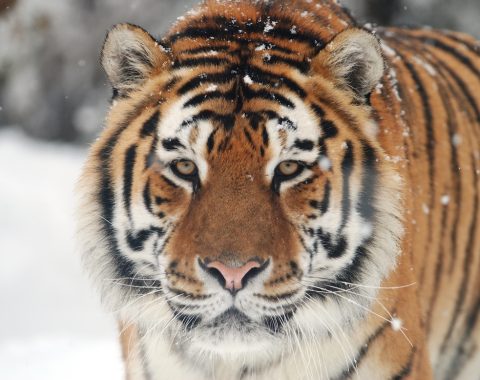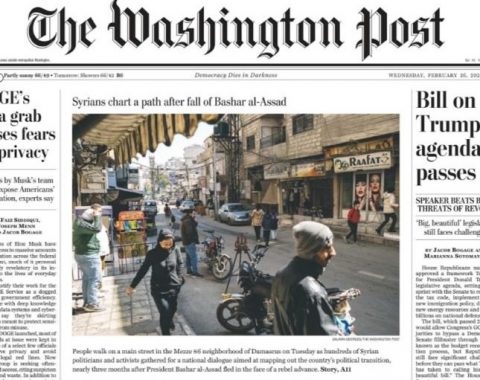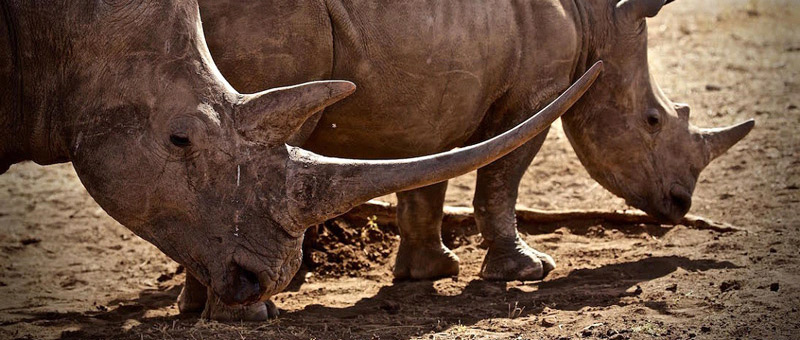Legalizing Ivory Trade: Taking to New Heights a Dangerous Policy Proposal By Alejandro Nadal and Francisco Aguayo – A Voice for Elephants
In a recent essay, Dan Stiles tries to explain why he thinks legalizing international ivory trade would help elephants’ conservation. “With a legal raw ivory trade, elephants can thrive”, he says. If legal raw ivory can be provided in sufficient quantity at predictable times and an acceptable price, the incentive to buy high-risk illegal ivory will evaporate, concludes Mr. Stiles. Debate around the policy response to the current poaching crisis has been polarized around the issue of market-based instruments, and as a result a lot of attention has focused on some form of regulated legal trade. Stiles’s newest proposal is yet another example of how market-based policies are recommended without any economic analysis. We examine first the new version of Stiles’s proposal for legalizing international trade and establishing a high-end market model in China as a means to reduce illegal trade. Second, we analyze his assertion that speculative stockpiling is the core driver of elephant poaching.
I: Naivete of a Market-Based Narrative The traditional storyline of pro-trade advocates for ivory has been that consumer prices will be pushed downward by a cheaper supply of legal raw ivory and that these low prices will depress profits, thereby eliminating the incentive for poaching. Thus the illegal ivory market will be outcompeted and put out of business by the use of market-based policies.
This narrative has two major flaws. On one hand, the notion that consumer prices will go down is, simply put, a wild guess, because virtually nothing is known about the market structure of ivory trade in China. On the other hand, the reduction in prices may trigger the expansion of demand (most likely amplified by lower laundering costs). Instead of reducing the problem, in both instances legal trade could easily lead to intensified poaching of wild elephants. Stiles thinks he has found the answer to this conundrum. His policy proposal would combine low prices of raw ivory, high final consumer prices, and would bring current illegal operators (traders, processors, and retailers) into the legal market by providing them with licenses.
This third component means that the policy objective is not to put the illegal trade out of business but to bring it into the legal market. That would mean adding the processing and marketing capabilities of the illegal market to the already existing registered market in China. In our view such an approach would lead to a catastrophic outcome. According to Stiles, a stable international supply of ivory to China would provide raw material at lower costs to legal factories and outlets, outcompeting illegal suppliers and driving them out of the market.
The legal segment of the trade, made up of registered and licensed factories and outlets, will cater to the high end of the market, producing and selling bigger and higher quality items at prices that only the richest customers can afford. In this manner demand will be kept under control as consumer prices become higher. According to Stiles, the demand for illegal ivory would drop, and the illegal market would be constrained to selling smaller items, like bracelets, chopsticks, and other trinkets—nevertheless requiring a source, and certain amounts, of raw ivory. In order to keep a lid on demand growth, Stiles proposes that the low price of raw ivory should coexist with high final consumer prices. But he does not discuss the fact that this implies having very high profitability rates in the trade.
Stiles appears to be unaware of the fact that this is exactly the opposite of what would be needed to discourage illegal trade and poaching. And as Adam Smith pointed out long ago, this high profit rate cannot remain a secret for any extended period and will attract new operators or firms striving to get into the trade. This is how competition works, and how it leads to market development and growth. Stiles suggests that a “conservation tax” could be imposed on ivory products to keep prices high. This could of course reduce profitability, although the tax could be transmitted to final consumer prices. In any event, a tax of this sort would be accompanied by perverse incentives to evade it and would bring about new pressures to maintain illegal operations. Stiles does not discuss these implications. Stiles says speculators have been stockpiling raw ivory during the past few years.
As we show below, his distinction between “speculators” and agents operating in the ivory market is unclear and without support. This misleading distinction allows him to ignore the fact that in a legalized market stockpiles could be used to sustain price competition and thus thwart efforts to put out of business illegal operators. In this context it is important to keep in mind another key problem that Stiles ignores: Supply sources for ivory are not under control today in Africa and will probably not be under any form of sufficient control any time soon. Thus the notion that supply by the Chinese government would be able to outcompete illegal sources is a tenuous, even disingenuous, proposition. One could think that institutional barriers to entry (the registry and licensing system operated by the Chinese government) would prevent new operators from entering the highly profitable market that would ensue from the coexistence of cheap raw material and high final prices. In fact, Stiles has a very different idea: In his proposal, all the illegal factories and outlets that would like to partake in the legal trade would be allowed to enter it. This means the same criminals and networks that have been driving the illegal trade would be entrusted into the legal system. Stiles proposes not only establishment of a legal trade but also inclusion of all the illegal operators. This is surprising. Normally pro-trade proposals aim at getting rid of, or subverting, the illegal trade. But not Mr. Stiles.
In his carrot-and-stick scheme, illegal operators would be offered an annual quota of legal ivory at low cost, and the illegal factories and outlets in China would be transformed into legal entities. In other words, once these illegal firms registered and became part of the legal trade, they would add their processing capabilities and marketing networks to existing installed capacity. Equally important, the demand that is currently satisfied by illegal operators would now be sanctioned as legal. Implementing this strategy would automatically translate into the expansion of existing installed capacity and of the market. This would modify the market’s structure, changing patterns of market power and channels of competition, creating new opportunities for scale and scope economies, and seriously affecting price formation processes. This formidable change would have quantitative and qualitative effects, and it has the potential to give new momentum to the future development of this market.
II: Stockpiling Is Not Independent of Trade Central to Stiles’s high-end ivory trade solution is the notion that the key driver of accelerated elephant poaching is the speculative stockpiling of raw ivory, which he contends occurs every time there is an attempt to reduce legal supplies of ivory. He uses this idea of speculative stockpiling to distinguish “normal” market demand from the role of speculators. This leads him eventually to the distorted view that speculative stockpiling is the culprit of runaway poaching but that the ivory trade somehow is not. This flawed logic leads him to promote trade while blaming speculators for the poaching crisis.
Speculative stockpiling is the explanation he finds not only for today’s poaching upsurge but also for the poaching crisis of the late 1980s. Both parts of his argument (that stockpiling drives poaching and that it is triggered by control policies) are mere conjectures, ill-supported by empirical evidence and based on flawed assumptions about market dynamics. With the exception of the 1989 Hong Kong ivory stock (we return to this point below), Stiles’s stockpiling argument is inferred without actual data on stockpiles or on consumer demand. The causal links he draws between the elements of his argument (poaching, stockpiling, and market control policies) are drawn carelessly across time periods and borders. The evidence that stockpiling was the driver of the 1980s poaching wave, according to Stiles, is found in the “huge stockpiles of raw ivory accumulated in Hong Kong and Japan.” These stockpiles, he argues, “would not have existed” had demand been high, because in that case all ivory would have been processed. In Stiles’s account, traders were stockpiling ivory in response to the “calls” for more controls and quotas, eventually codified in the trade ban.
In a nutshell: According to Stiles, the poaching crisis was driven not by trade or business interests but by misguided efforts to control them. The fallacy in this argument is the assumption that stockpiling and trade are opposites, not complementary, in the operation of mercantile circulation. This ignores the fact that keeping stockpiles is part and parcel of operations in every industry, especially in international trade where scale provides economies and bargaining advantages. Trading companies or processors will stockpile raw material in order to respond to changes in demand or as an instrument of competition. Of course, the cost of holding large stocks needs to be compensated by the advantages gained in terms of market power. Arbitraging between building stockpiles and selling or getting out of the trade depends on expectations about price changes and cost structures. Expectations about advantages may or may not be confirmed by future market performance. Large stocks also provide additional advantages to firms in terms of price and quantity control in the markets where they buy and sell. Finally, stockpiling can indeed be a response to supply insecurity, price volatility, or speculative gains, but the point here is that this is not separated from the normal behavior of firms that trade in high volumes.
The Hong Kong stock to which Stiles refers (656 tonnes in 1989) was the remnant of a cycle of international trade that legally moved more than 7,000 tonnes of ivory through that economic space. Ivory imports to Hong Kong amounted to around 3,500 tonnes between 1952 and 1976 (Barbier, et al, 1992, Elephants, Economics and Ivory) and 3,618 between 1977 and 1989 (CITES ivory trade database). Contrary to Stiles’s assertion, 25 percent of the stockpile consisted of carved ivory (Milliken and Melville, 1989, The Hong Kong Ivory Trade). This magnitude is a more accurate estimate of the actual demand acting upon ivory supplies in African and Asian range countries, to which the further use of ivory was basically indifferent. We do not insinuate that this ratio (stockpiling/trade) is irrelevant, but clearly the distinction is futile in terms of its effects on poaching. Even under the implausible assumption that stockpiled ivory has a different effect on poaching than traded ivory, what Stiles describes as “huge stocks” only amount to 9 percent of all the ivory that actually got through to the Hong Kong market before international trade was banned. The claim that speculative stockpiling of raw ivory is the driver of the current poaching surge is rather difficult to sustain, especially when no data on stocks or consumer demand are provided and the size and dynamics of the illegal market are ignored.
There is strong evidence that increasing flows of illegal trade have been entering China (as documented in various TRAFFIC reports on ETIS). But there is no evidence that supports the idea that stockpiling is increasing or that consumer demand is declining. Conrad and Moyle (2013) report that ivory carvers have been using less ivory than the available annual quotas of legal ivory. But neither that work nor Moyle’sblog post shows a declining trend in ivory throughput (that is, ivory processed) in the Chinese carving industry. The latter reference shows, on the contrary, an upward trend from 2010, with a small decline in 2012 but a recovery in 2013, with ivory throughput, expressed by weight, doubling from 2010 to 2013. Even assuming that legal carvers are processing at rates lower than expected, this is insufficient as evidence of stockpiling.
The “ivory bubble” in the arts and crafts auctions market, which peaked in 2011 did not decline because of a reduction in consumer demand. As stated by Chinese researcher Gao Yufang, the bubble collapsed when the Chinese government intervened and canceled the live auction market. Gao draws our attention to governmental promotion of the cultural value of ivory, but this proves that state intervention was crucial for defining market niches and profitability levels, a key element for the development of markets as we argue below. Obviously, there is much research to be done on the role of stockpiling in the ivory market. This and other expressions of strategic behavior must be critically considered when dealing with economic instruments for controlling poaching.
In reality, Stiles is trying to point at the key role of intermediate demand for ivory, but he makes a serious mistake in isolating it from the market dynamics as a whole. Intermediate demand is part of a firm’s investment, and investment is driven by profitability. As long as acquiring ivory to sell is profitable, businessmen will invest in it. Once investment takes place, investors will press in every possible way to recover costs plus profits, and this requires putting merchandise into circulation through the market. So developing the market is a crucial task for traders, processors, and retailers. Isolating consumer demand and speculative demand contradicts logic and business practice. The active role of intermediate demand makes it the more difficult to reconcile conservation arguments with the profit-oriented goals of traders. Isolating policy factors from the other components of market dynamics is equally mistaken. Industrial promotion measures by some agencies in the Chinese government and legal supply arrangements like the one-off sales are not independent events but rather part of the same institutional environment. Even the establishment of a registry system for legal ivory carvings in China was aimed at complying with CITES’s requirements to become an approved trading partner. And that’s precisely how market development dynamics operate: Once supply constraints are removed, demand’s potential can become part of the equation as market niches are identified and exploited.
This process sends signals to the suppliers, who can then prepare a new round of investment. The end result is that owners of profitable businesses (traders, the processors, the state-owned firms, etc.) are the true drivers of the market, aided by state intervention and promotion policies. In the effort to make the case for resuming international trade, Stiles justifies his argument on a biased and incomplete view of key factors driving ivory trade and the killing of elephants. He not only lacks solid data on the size of the illegal market but also chooses to dismiss the importance of economic analysis in a serious discussion of market-based policy instruments. As a result, he is unable to perceive adequately the nature of the very market forces he so unhesitantly recommends as his preferred policy option.
In conclusion, we think that Mr. Stiles’s proposed market-based solution lacks grounding in crucial information about the structure of China’s ivory market. For many years Stiles has carried out interesting surveys of ivory markets, generating significant amounts of information on numbers of outlets and employees, number of pieces on display, aspects of the regulatory regime, and prices. This is valuable information, but such surveys offer no analytical perspectives on the economic structure or the dynamics of these markets. We would like to remind the policy community that in the absence of information on the structure of markets, proposals to legalize trade may easily backfire. The unintended consequence could be even further declines—or even extinction—of elephants in the wild.
Alejandro Nadal is professor of economics at the Centre for Economic Studies, El Colegio de Mexico. He is also chair of the Theme on the Environment, Macroeconomics, Trade and Investment (TEMTI) of CEESP-IUCN.
Francisco Aguayo is PhD fellow at the Maastricht Economic and Social Research and Training Centre on Innovation and Technology (UNU-MERIT), at Maastricht University, as well as a member of TEMTI, CEESP-IUCN. The original article here: http://voices.nationalgeographic.com/2014/10/22/legalizing-ivory-trade-taking-to-new-heights-a-dangerous-policy-proposal/
Picture: Ivory stockpile in Tanzania. Credit: National Geographic





